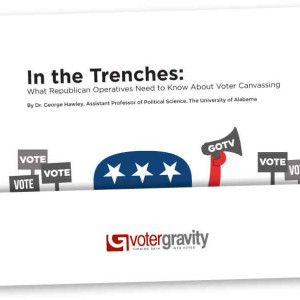In a digital age, your campaign must have a strong online presence—and that means more than just an email account and website.
By using Facebook, President Obama was able to connect with voters during the 2012 election cycle, in swing states who lacked listed phone numbers. According a survey released in 2012, 22 percent of registered voters used a social media site —such as Facebook or Twitter—to let others know how they voted. 30% reported that they were encouraged to vote for either President Obama or Governor Romney by friends and family on a social networking site, and 20 percent used a social networking site to encourage others to vote.
These numbers are even higher when we look exclusively at younger voters. Among voters under the age of 30, these percentages were 45 percent, 29 percent, and 34 percent, respectively.
During the 2012 election, face-to-face communication was the number one way of encouraging voters to get out and vote. The second most frequent method was social networking sites – social networking sites were used for this purpose more frequently than emails, texts, or phone calls.
Clearly, average voters are using online social networks to influence their friends and family on political matters. Facebook even has the option for you to let people know that you voted—and you can even pick who you voted for.
In 2006, it was found that Democrats were more likely to engage in campaigning online than Republicans were. This edge over the Republicans only became stronger during the 2008 election. Interestingly enough, Republican congressional candidates were found to have a stronger presence on Youtube than Democrats.
Before the Iowa caucuses in 2008, a study found that nearly 48 percent of students and young people received their news from a social media site, which it’s not hard to figure out that they would use social media to gather information on political candidates.
The idea that a well managed social media campaign can turn out a high volume vote can’t be dismissed due to the fact that individuals who saw that their friends voted/who they voted for were actually more likely to vote.
According to Facebook, the candidates who were most successful on Facebook, won their races. Following the 2010 congressional elections, Facebook claimed that in 74 percent of House races, the candidates with the most Facebook “fans” won their races. This was also true of 81 percent of Senate candidates. With that being said, however, we should be more skeptical of data and results received from social media than say, gallup.
Use your social media accounts to build name recognition, get your message out there and turn out the vote to win! Find out more by downloading Social Politics: The Impact of Social Networking on Political Campaigns:
Download the Voter Gravity report here by Dr. George Hawley, assistant professor of political science at the University of Alabama, to dive into the latest research revealing recent trends that impact your campaign. Discover the answers to these important questions:
- The impact of internet activism on past elections
- What actions voters take online, and how best to reach them
- How to use social media to reach young voters
- How social media can work in conjunction with your ground game






